Embrace the Thrill: Skiing & Snowboarding Across America
From the towering, snow-capped peaks of the majestic Rockies to the impressive, challenging slopes of the East Coast, the USA offers unparalleled skiing and snowboarding experiences for every skill level. Whether you're a seasoned pro carving fresh powder or a beginner taking your first tentative glides, the diverse landscapes and world-class resorts provide an unforgettable winter adventure. Explore the vast opportunities that await you, from exhilarating downhill runs to serene cross-country trails, all set against breathtaking natural backdrops.
The United States is a true paradise for winter sports enthusiasts, boasting an incredible array of resorts that cater to every preference. Discover resorts renowned for their epic snowfall, others celebrated for their vibrant apres-ski scenes, and many more perfect for family-friendly vacations. Prepare to dive into a world where the crisp mountain air invigorates your senses and the thrill of the descent creates memories that will last a lifetime.
Discover America's Premier Ski Resorts
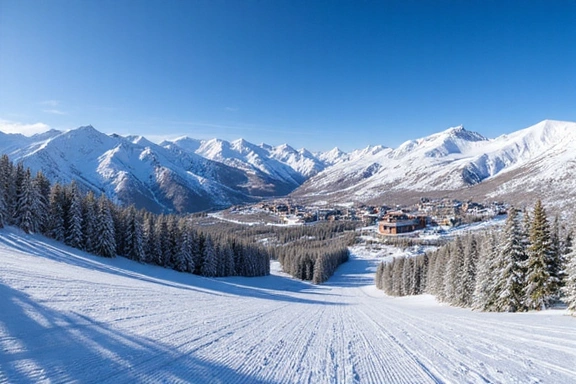
Vail, Colorado
Renowned for its expansive Back Bowls and European-style village, Vail offers a truly world-class skiing experience. With over 5,000 acres of skiable terrain, it caters to all levels, from gentle beginner slopes to challenging expert runs. Enjoy luxurious amenities and a vibrant apres-ski scene.

Aspen Snowmass, Colorado
Comprising four distinct mountains – Snowmass, Aspen Mountain, Aspen Highlands, and Buttermilk – Aspen Snowmass provides an incredible variety of terrain. From family-friendly runs to extreme expert steeps and world-class terrain parks, it's a destination that truly has it all, complemented by a sophisticated cultural scene.
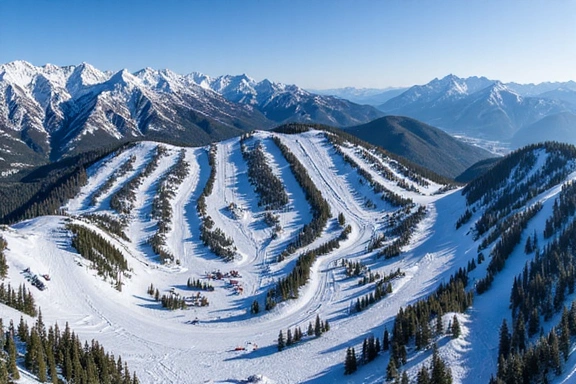
Park City, Utah
As the largest ski resort in the United States, Park City offers an immense playground for skiers and snowboarders. Its diverse terrain includes vast bowls, gladed runs, and award-winning terrain parks. The historic mining town provides charming dining, shopping, and entertainment options just steps from the slopes.
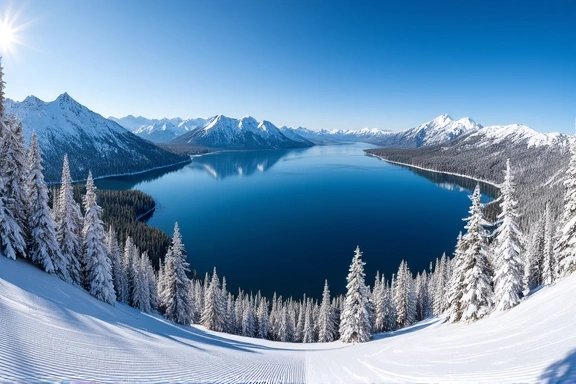
Lake Tahoe Resorts, California/Nevada
The Lake Tahoe region is home to numerous world-class resorts, including Heavenly, Palisades Tahoe, and Northstar. Each offers unique charms, from Heavenly's incredible lake views to Palisades Tahoe's challenging expert terrain and Northstar's family-friendly atmosphere and luxury amenities. A perfect blend of natural beauty and diverse skiing.
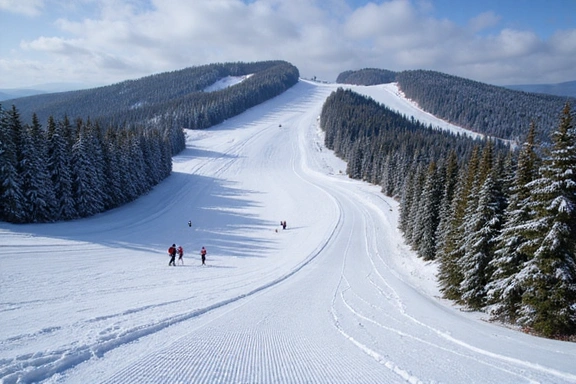
Killington, Vermont
Known as "The Beast of the East," Killington boasts the largest ski area in the Eastern United States, with a reputation for its extensive trail network and long ski season. It offers diverse terrain, from gentle cruisers to challenging moguls and glades, making it a favorite for East Coast enthusiasts.
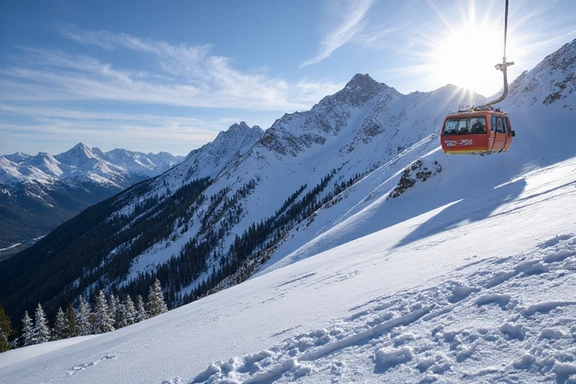
Jackson Hole, Wyoming
For those seeking an adrenaline rush, Jackson Hole is legendary for its challenging terrain, steep slopes, and deep powder. The iconic Aerial Tram provides access to vast, ungroomed expert runs. While primarily known for advanced skiing, it also offers beautiful intermediate and beginner areas, all within a stunning Teton backdrop.
Understanding Slope Difficulties and Terrain Parks
Navigating a ski resort is made easier by understanding the universal color-coded system for slope difficulty. This system helps skiers and snowboarders choose trails appropriate for their skill level, ensuring a safe and enjoyable experience. Beyond traditional slopes, terrain parks offer a different kind of thrill for those looking to test their acrobatic skills.
Slope Difficulty Ratings
-

Green Circle: Beginner
These are the easiest trails, typically wide, gently sloped, and meticulously groomed. Perfect for first-timers and those still building confidence. They provide a safe environment to learn basic turns and control.
-

Blue Square: Intermediate
Intermediate slopes are steeper than green runs but still manageable for most recreational skiers and snowboarders. They often feature varied terrain and may have occasional ungroomed sections, offering a good challenge for improving skills.
-

Black Diamond: Advanced
These trails are significantly steeper and may include challenging conditions like moguls, glades, or narrow passages. They require strong control, confident turns, and the ability to adapt to changing snow conditions. Recommended for experienced skiers and snowboarders.
-

Double Black Diamond: Expert
Representing the most difficult terrain, double black diamonds feature extreme steepness, mandatory air, cliffs, and highly challenging natural obstacles. These runs are for highly skilled experts only and often require specific techniques to navigate safely.
Terrain Parks: A Playground for Freestylers
Terrain parks are specially designed areas within ski resorts where skiers and snowboarders can practice freestyle tricks and maneuvers. They are typically divided into sections with varying levels of difficulty, indicated by similar color-coded signs (small, medium, large features). These parks are a hub of creativity and excitement, offering a dynamic environment for progression.
- Jumps: Ranging from small rollers to massive kickers, jumps allow riders to launch into the air and perform aerial tricks. Always start with smaller jumps to gauge your ability and landing technique.
- Rails and Boxes: These are metal or plastic features designed for sliding and grinding. They come in various shapes and sizes, from flat boxes for beginners to complex kinked rails for advanced riders.
- Halfpipes: Large, U-shaped snow structures that allow riders to gain speed and perform tricks as they go from one side to the other. Olympic-level halfpipes are massive, but many resorts offer smaller versions for practice.
- Other Features: Many parks also include features like jibs (natural or artificial obstacles), hips (jumps that send you sideways), and fun boxes, providing endless opportunities for creative expression.
Always ride within your limits, wear a helmet, and observe all posted rules and warnings in terrain parks. It's a fantastic way to develop new skills and enjoy a different aspect of the mountain!
Mastering the Slopes: Training & Lessons
Whether you're strapping on skis or a snowboard for the very first time, or looking to refine your technique and tackle more challenging terrain, professional instruction is invaluable. Ski and snowboard schools at resorts across the USA offer a variety of programs designed to help you build confidence and improve your skills, ensuring a safer and more enjoyable experience on the mountain.
Ski & Snowboard School Programs
Most major ski resorts host comprehensive ski and snowboard schools with certified instructors ready to guide you. These schools offer structured learning environments for all ages and abilities, from foundational skills to advanced carving and freestyle techniques.
- Beginner Packages: Often include a lesson, lift ticket for beginner-specific lifts, and rental equipment, providing a perfect entry point into the sport.
- Children's Programs: Tailored for younger learners, these programs combine instruction with fun activities, ensuring kids learn in a safe and engaging environment.
- Adult Group Lessons: A cost-effective way to learn or improve, group lessons allow you to learn from an instructor and fellow learners. Groups are typically formed based on current skill level.
- Advanced Clinics: For experienced riders looking to master specific skills like powder skiing, moguls, glades, or terrain park tricks, specialized clinics offer targeted instruction.
Private vs. Group Lessons: Which is Right for You?
Deciding between a private and a group lesson depends on your learning style, budget, and specific goals.
-
Private Lessons:
- Personalized Attention: The instructor focuses solely on your needs, addressing specific challenges and tailoring the lesson to your pace.
- Faster Progression: Often leads to quicker skill development due to one-on-one feedback and immediate adjustments.
- Flexibility: Can often be scheduled at your convenience and customized to your specific goals, whether it's conquering a particular run or improving a specific turn.
- Ideal for: Rapid improvement, overcoming a plateau, or learning very specific techniques.
-
Group Lessons:
- Cost-Effective: More affordable than private lessons, making them accessible for many.
- Social Aspect: An opportunity to meet other skiers or snowboarders at a similar skill level and share the learning experience.
- Structured Curriculum: Follows a set curriculum, ensuring you cover fundamental skills systematically.
- Ideal for: Beginners, those on a budget, or people who enjoy learning in a social setting.
Essential Tips for Beginners on the Slopes
- Start Slow: Resist the urge to go too fast. Master turning and stopping on gentle slopes before moving to steeper terrain. Patience is key.
- Wear a Helmet: This is non-negotiable. A helmet is your primary defense against head injuries. Always protect your brain!
- Hydrate and Fuel: Mountain air and physical exertion can lead to dehydration. Drink plenty of water and bring snacks to keep your energy up throughout the day.
- Don't Be Afraid to Fall: Falling is a natural part of learning. Learn how to fall safely (try to fall to the side, not straight back) and get back up efficiently.
- Dress in Layers: Weather can change quickly on the mountain. Layering allows you to adjust your clothing to stay comfortable and warm.
- Respect the Mountain Code: Familiarize yourself with the "Skier's Responsibility Code" which outlines safe conduct on the slopes.
- Take Breaks: Listen to your body. Rest when you're tired to prevent fatigue-related accidents.
Embrace the learning process, enjoy the stunning scenery, and most importantly, have fun!
Your Essential Equipment Guide for Skiing & Snowboarding
Having the right gear is paramount for a comfortable, safe, and enjoyable experience on the snow. Whether you're buying or renting, understanding the different types of equipment and their purposes will help you make informed decisions tailored to your skill level and preferred style of riding.
Skis & Snowboards: Finding Your Perfect Match
-
Skis:
- All-Mountain Skis: The most versatile option, suitable for a variety of snow conditions and terrains. Great for beginners to advanced skiers.
- Powder Skis: Wider underfoot, designed to float effortlessly through deep, fresh snow. Ideal for off-piste adventures.
- Carving Skis: Narrower with a deep sidecut, allowing for quick, sharp turns on groomed trails. Excellent for those who love to carve.
- Freestyle Skis: Often twin-tipped, designed for tricks, jumps, and riding switch in terrain parks.
When choosing skis, consider your height, weight, skill level, and the type of terrain you plan to ski most often. Length, width, and stiffness all play a role.
-
Snowboards:
- All-Mountain Snowboards: Versatile and balanced, designed for riding everything from groomed runs to powder and even some park features.
- Freestyle Snowboards: Softer flex, twin-tip shape, and often shorter, making them ideal for jumps, rails, and tricks in the park.
- Freeride Snowboards: Stiffer, directional shape, and often longer, built for speed, stability, and handling deep powder and challenging terrain.
- Powder Snowboards: Feature a directional shape with a setback stance and often a wider nose to maximize float in deep snow.
Snowboard length, width, flexibility, and profile (camber, rocker, hybrid) are crucial factors. Your boot size and riding style will guide your selection.
Boots & Bindings: The Connection to Your Ride
-
Ski Boots:
The most critical piece of equipment for comfort and control. Ski boots should fit snugly but not painfully. The "flex" rating indicates stiffness (lower numbers for beginners, higher for advanced skiers). Getting professionally fitted is highly recommended to prevent discomfort and improve performance.
-
Snowboard Boots:
Come in various flex ratings (soft, medium, stiff). Soft boots offer more forgiveness and are great for beginners and freestylers. Stiffer boots provide more response and support for freeriding and aggressive carving. Ensure they fit well with no heel lift.
-
Ski Bindings:
Crucial for safety, bindings connect your boots to your skis and are designed to release in a fall to prevent injury. They are set to a "DIN" (Deutsches Institut für Normung) setting based on your weight, height, age, and skill level. Always have bindings professionally mounted and adjusted.
-
Snowboard Bindings:
Connect your boots to your snowboard. They come in various styles (strap-in, step-in) and materials. The choice depends on personal preference and riding style. Proper angle and stance width adjustment are key for comfort and performance.
Protective Apparel & Layering
Beyond your primary gear, proper protective apparel and layering are essential for safety, warmth, and comfort on the mountain.
- Helmets: Absolutely mandatory. Protects against head injuries from falls or collisions. Choose one that fits snugly and is certified for snow sports.
- Goggles: Protect your eyes from UV rays, wind, and snow. Look for anti-fog features and lenses suited for various light conditions (e.g., low light vs. sunny).
- Gloves/Mittens: Keep your hands warm and dry. Mittens are generally warmer than gloves. Look for waterproof and insulated options.
- Base Layers: Moisture-wicking fabrics (synthetic or merino wool) worn directly against the skin to pull sweat away and keep you dry. Avoid cotton.
- Mid-Layers: Provide insulation. Fleece or synthetic puffy jackets are common choices.
- Outer Shell (Jacket & Pants): Waterproof and breathable layers to protect against wind, snow, and rain. Look for features like powder skirts, zippered vents, and plenty of pockets.
- Socks: Thin, moisture-wicking ski/snowboard-specific socks are best. Avoid thick cotton socks that can bunch up and cause blisters.
Investing in quality gear will significantly enhance your experience and safety on the slopes. Don't hesitate to consult with experts at specialty shops for personalized advice.
Explore US Ski Resorts with Our Interactive Map
Discover the vast array of ski and snowboard resorts across the United States. Use our interactive map to locate resorts, explore their proximity to major cities, and plan your next winter adventure. Click on markers for more details about each destination.
Map data ©2023 Google
This map provides a general overview of major ski resorts in the USA.
For detailed trail maps and specific resort information, please visit the individual resort websites linked from our Gear & Equipment page or the resort descriptions above.